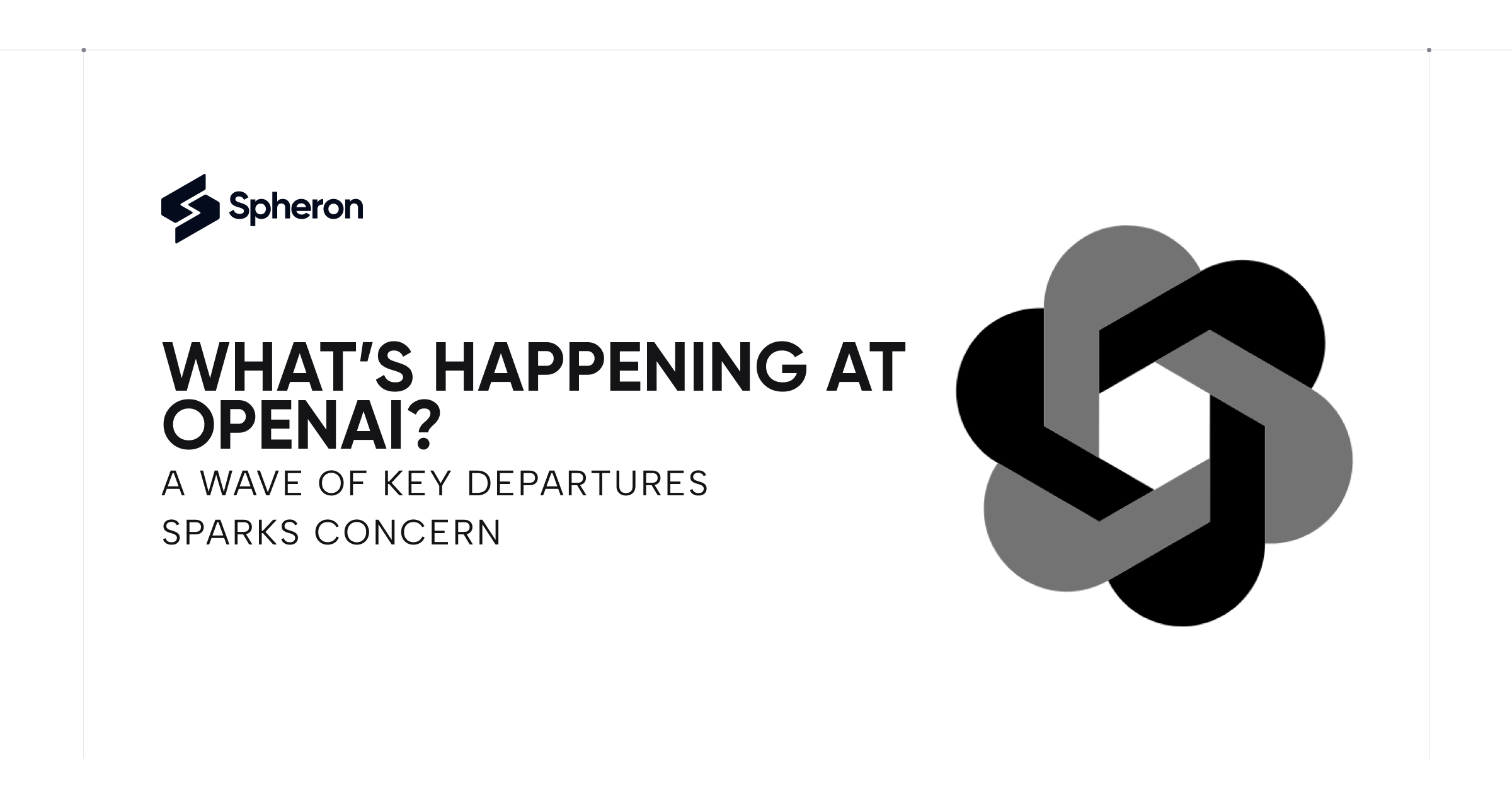What’s Happening at OpenAI? A Wave of Key Departures Sparks Concern
 Spheron Network
Spheron Network
Recently, OpenAI announced another wave of key management departures, including Chief Technology Officer Mira Murati, Chief Research Officer Bob McGrew, and Head of Post-Training Barret Zoph. These exits have intensified speculation about the future of one of the world’s most influential AI companies under Sam Altman’s leadership.
These departures follow earlier exits by key figures such as Ilya Sutskever and Jan Leike from the Alignment and Security team, Policy Research Head Gretchen Krueger, Security experts Daniel Kokotajlo and William Saunders, ChatGPT Architect John Schulman, and company co-founder and president Greg Brockman. While some have left to pursue their own initiatives or joined competitors like Anthropic, others have yet to announce their next steps. Leaving OpenAI, a company of such stature, seems to open doors effortlessly for many.
Internal Tensions Behind the Departures
The steady stream of senior leaders exiting OpenAI points to a mix of internal and external pressures. As the company continues to expand, it’s grappling with tensions, especially as it shifts from its non-profit research roots to a more commercial focus. This shift toward revenue generation has created friction between leaders advocating for ethical AI development and those driving faster growth and profitability.
Key figures, including co-founder Ilya Sutskever and security expert Jan Leike, left over concerns that OpenAI was prioritizing flashy, marketable products over crucial security research, especially regarding the development of Artificial General Intelligence (AGI).
Financial Strain Adds Pressure
In addition to internal discord, OpenAI is facing significant financial strain. Despite generating substantial revenue, its costs far exceed its earnings, prompting talks of new investment rounds and further commercialization. This drive for short-term financial gain is a core reason for the departure of influential figures like Mira Murati and John Schulman, as it clashed with their focus on ethical AI progress.
Leadership Struggles at OpenAI
The latest executive departures highlight ongoing leadership challenges, particularly following CEO Sam Altman’s brief ouster earlier this year, which destabilized the company. These ongoing exits create uncertainty for OpenAI, which is now facing challenges in maintaining leadership continuity, retaining talent, and managing the rapid pace of innovation in AI.
Losing pivotal figures like Schulman and Murati could severely impact OpenAI's ability to sustain its current trajectory. Both played essential roles in creating core technologies like reinforcement learning and ChatGPT. As the company navigates this period of transition, employee morale may also take a hit, as confidence in OpenAI’s long-term stability and vision becomes shakier.
Ethics vs. Profit: The Internal Debate
OpenAI has long positioned itself as a leader in the responsible development of AI. However, the departures of experts like Sutskever and Leike raise concerns about the company's focus. Their exits reflect growing tension between prioritizing ethical research and pursuing aggressive commercialization.
Former executives have openly criticized OpenAI for prioritizing profit over security, which could damage the company’s reputation for ethical AI development. OpenAI may face heightened public scrutiny and even regulatory challenges if this perception grows. Furthermore, losing trust in the research community could limit future partnerships with organizations prioritizing safe AI advancement.
The Shift Toward Commercialization
OpenAI’s pivot to a commercial, for-profit business model has led to internal and external friction. As the company seeks new funding and aims to push its valuation as high as $150 billion, it faces the delicate challenge of balancing profitability with responsible AI development. This ongoing conflict is made even more complex by competitors like Anthropic—founded by former OpenAI employees—who are attracting top talent and positioning themselves as more security-conscious alternatives.
Financial Struggles Pose a Long-Term Risk
Despite its commercial success and growing user base, OpenAI’s financial model is problematic. With annual costs nearing $7 billion, the company is spending far more than it earns, which adds pressure to commercialize its technology quickly. This urgency could lead to rushed decisions prioritizing short-term profits at the expense of long-term innovation and security.
OpenAI’s financial difficulties could also hurt its ability to attract and retain top talent. If its financial future remains uncertain, employees may become wary, especially as the value of their stock options might be at risk.
Challenges to Sam Altman’s Leadership
CEO Sam Altman's leadership is now under scrutiny. His brief removal earlier this year created divisions within the company, and the continued exodus of senior management could raise further doubts about his ability to steer OpenAI through these turbulent times. If concerns about OpenAI’s ethical practices and financial health continue to grow, Altman may face increased pressure from the board and influential investors.
OpenAI’s Uncertain Future
OpenAI revolutionized the AI industry with the release of DALL-E and ChatGPT in 2022, and it still has the potential to shape the future of AI. However, its ability depends on maintaining stability, strong leadership, and a balanced approach between innovation and ethical practices. If the company fails to navigate these challenges, it risks more than just financial losses—the geopolitical implications could be significant.
The coming months will be critical for OpenAI as it seeks to stabilize and reassert itself as a leader in the AI space.
Subscribe to my newsletter
Read articles from Spheron Network directly inside your inbox. Subscribe to the newsletter, and don't miss out.
Written by

Spheron Network
Spheron Network
On-demand DePIN for GPU Compute